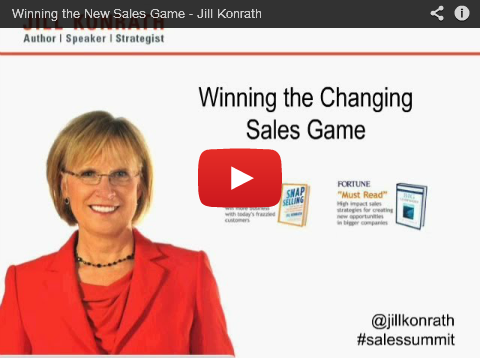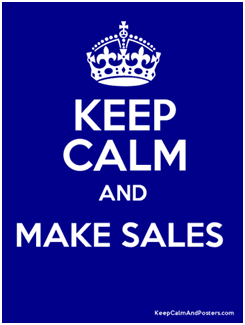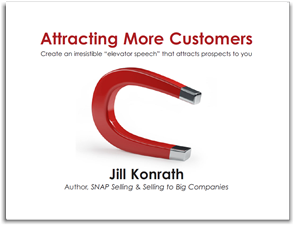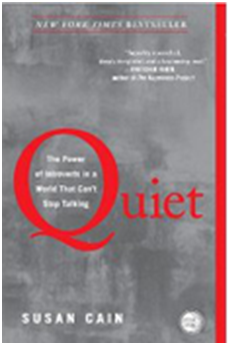Jill Konrath's Blog, page 28
July 29, 2013
Winning the Changing Sales Game
Recently, I was a keynote speaker at the Inside Sales Virtual Sales Summit. Over 12,000 salespeople and leaders attended the event! If you'd like to listen in to my 30-minute session on Winning the Changing Sales Game, here it is: 
[image error]Leo Dirr from InsideSales.com recapped my session in this blog article, 4 Simple Quesitons That Will Transform Your Sales Process. It's a good, concise interpretation of the key take-away's.
Read the full article here: http://www.insidesales.com/insider/sales-process/4-questions-to-transform-your-sales-process






July 24, 2013
5 Steps to Sales Productivity
Today's post from the Chamber of Commerce features business-growth advice for small companies.
 If the adage “time is money” is true, then productivity is a valuable asset in sales. From initial sales contact to follow up calls, making even one sale is an investment in time and sales staff resources. So how can you boost your own efficiency, and encourage your employees to do the same?
If the adage “time is money” is true, then productivity is a valuable asset in sales. From initial sales contact to follow up calls, making even one sale is an investment in time and sales staff resources. So how can you boost your own efficiency, and encourage your employees to do the same?
Take a look at these five tips for heightened productivity in sales:
Prepare. It may seem counterintuitive to productivity to spend more time upfront getting ready for a sales call or meeting, but it will make a difference in the long run. A salesperson with his or her “act together” is one that will make more sales.
Take a deep breath. Productivity expert Laura Stack talks about the importance of calmness in making sales. On The Productivity Pro® blog, Strack says that a “confident, energetic, authentic individual will always attract more attention… than someone who seems nervous or apathetic.” Get your nerves in check before any sales presentation and eliminate negative energy.
Believe what you say. Do you think that your product or service is vital to your customers? Avoid feeling like you are asking for a favor during a sales presentation; instead, remind yourself of all the ways your item will benefit the buyer. You are not “bothering” your prospect – you are showing that prospect how business will improve with the aid of the product or service you are selling.
Encourage interaction. It is not enough to simply talk. You must find ways to engage the listener in sales presentations. Think ahead to the questions your prospects may have and then encourage them to ask them. Do not assume that a prospect will arrive at the need for what you offer alone. It's your job to guide them down the path that has you as the answer.
Be confident. The best way to exude confidence is to combine all four of the above steps. With the right preparation, you will be able to answer any queries expertly. Staying calm will keep your body language and vocal inflection strong. Having faith in your product or service will make it easier for your listeners to also believe in it. Allowing for input from your prospects shows that you are not tethered to a sales script and that you really do know the ins and outs of what you are selling.
Productivity in sales is not just a nice phrase to toss around – it is a necessity for true revenue growth.
How do you ensure your own productivity when it comes to sales?
---
Katie Parsons writes for ChamberofCommerce.com where she specializes in business news affecting major markets. ChamberofCommerce.com helps small businesses with online growth. Plus, it facilitates connectivity between local firms and over 7,000 Chambers worldwide.






July 22, 2013
[Video] This Personality Trait Can Predict Your Sales Success
Would you believe that a person's behavior at a party could accurately predict their sales success? It's true. Recently, two researchers were able to determine the winners of a business competition with 87% accuracy simply by observing their social cues at a pre-event gathering.
They watched for things like their energy level, gestures, expressions, tone and more. In short, here’s what they discovered about achieving sales success:
Successful salespeople had more energy and were more positive about things. They talked and listened more. They spent more face time with people, chatting with them and drawing them out. Their positive attitude truly did make a difference - in the other person.
So, what does that mean to you as a seller? First off, if you're a natural at it - lucky you! Keep using your charm to work your magic.
However, if you're like me, being charismatic is not natural, but it can be learned. You can practice upping your energy level. When you're in social gatherings or business meetings, you can focus intently on other people and get them talking. You can also be more positive - even if it's just for a short time.
At first, for me, it felt really awkward. But over time, you can actually get used to this new charismatic persona - and even enjoy it! Plus, it has a positive impact on your work and your interactions with others. And that matters.







July 17, 2013
Example of an Elevator Speech You Don't Want to Emulate

The Minimizer
When asked the question “What do you do?” most people minimize their value. Minimizers position themselves by either their title or by their products/services. Their elevator speeches are brief and factual. They really dislike “puffery” and bragging and give the most concise response possible.
Here are some common examples of The Minimizer elevator speech:
"I sell software."
"I'm a consultant."
"I'm a mortgage broker."
"I'm self-employed."
There are two main problems with the way Minimizer's respond to the big question:
1. It's boring! When you lead with your title, most people immediately assume they know what you do. How many other web designers are there? How about printing salespeople? Marketing communications companies? IT specialists?
As a consequence, people typically aren’t too interested in learning more, and the conversation ends or moves on to a different topic. You’ve shut the door on any opportunity to build your referral network.
2. You become a commodity: When you position yourself by the products or services you sell, you also put yourself into the same category as your competitors, which makes you a commodity.
If someone needs what you do, they immediately want to know how much you charge or what your price is. No matter what you say, you’re in trouble! Buyers automatically compare your price tag to other suppliers – even though they don’t know why you may be a better value, more productive or more capable.
Perception is everything. Don’t let people assume they know what you do. Make sure to clearly articulate the value you bring to the companies you work with.
Download my ebook, Attracting More Customers, to get more examples of elevator speeches.






July 15, 2013
[Video] Why Prospects Avoid Making Buying Decisions
Right now I’m in the process of switching to a new CRM system. My current one is decent, but it lacks a tight integration with social media that I think is so vital today. But do you know how I’m feeling right now?
I have this huge pit in the bottom of my stomach. I dread making this change – even though I believe it’s better for me. All I can think about is having to learn a new system that disrupts my normal way of working. I’m swirling in the confusion. I hate going backwards before I can go forward.
Another part of me is screaming, “Jill, you don’t have time for this. Other projects you’re working on are much more important.” And, I’m right. I don’t have time.
And then I started to laugh. As sellers, we need to remember this feeling. It’s what our prospects and customers are dealing with every single day as they face new buying decisions.
Is it any wonder that they choose to stay with their status quo?
I can honestly say, that the only reason I said yes to this change is that this CRM company promised me they’d help me through the entire transition.
Here are my challenges to you. If change is hard for your customers, what can you to do to make buying decisions easier for them? And, if it’s not going to be easy, how can you make sure that they know the pain is worth the ordeal?
Think about it! It’ll impact your sales results.







July 10, 2013
Why You Need to Rethink Your Elevator Speech
 "So, what do you do?"
"So, what do you do?"Now that’s a million dollar question! If you answer it correctly, the thick walls protecting the inner sanctums of big companies come tumbling down and the red carpet is rolled out for you.
Answer it incorrectly, and you get stuck on the outside, envious of those who managed to get in and wondering why no one wants to meet with you.
Everyday you meet people who could use your products or services or who know others who could benefit from what you do. But unless you tell them what you do in a clear, concise and compelling manner, these relationships go nowhere.
That’s why you need an elevator speech – a short description of your business that enables prospective buyers to know who you work with and what value you bring to the relationship. An elevator speech conveys these marketing messages in a manner that literally attracts the right customers to you.
In today’s fast-paced world, the average person is bombarded with thousands of marketing messages from multiple mediums every single day. Advertising is everywhere – television, radio,road signs, email, banner ads, direct mail, clothing, pens, newspapers and magazines. These pervasive, and often intrusive methods of capturing attention have created a backlash; most people don’t even notice them anymore.
To break through all this marketing clutter, it’s imperative to have an enticing elevator speech that speaks directly to the needs of your customers. And, it has to roll off your tongue easily, naturally and conversationally.
Many people intuitively know this, but still struggle with how to respond. If you’re unsure about the quality of your elevator speech or want to improve it, check out my Attracting More Customers eBook. Here’s what you’ll learn:
The most common responses to “What do you do?” and why they’re ineffective.
How to develop a compelling elevator speech that attracts prospective customers.
How to fine-tune the delivery of your elevator speech.
Different ways to use your elevator speech to market your product or service.
Developing a clear and compelling elevator speech helps you attract more of your ideal customers and gives you enhanced clarity about the work you do. Plus, if you repeat it often enough, it becomes a self-fulfilling prophecy. You’ll become even more of what you want to be.






July 3, 2013
Harnessing the Power of Introverts in Sales

Today's post from the Chamber of Commerce features business-growth advice for small companies.
Susan Cain compares the societal status of introverts in the workplace to that of women in the early 1960s. Introverts, she says, have a lot of work to do to be fully utilized and appreciated.
“The current workplace is not set up for introverts to succeed,” she said in a recent phone interview. “This leads to a colossal waste of time and energy.”
Since writing her New York Times bestseller “Quiet: The Power of Introverts in a World that Can’t Stop Talking” Cain says support for her observations has been overwhelming. Introverts who have always felt societal pressure to act like extroverts are finding new ways to behave.
In an interview with Rookie magazine actress Emma Watson references Susan Cain’s book and says that her own discovery that she is an introvert was empowering.
Celebrities are not the only ones who can benefit from embracing and using the strength of their introverted nature though. When it comes to sales and business development success, Cain insists that introverts play a vital role.
“Introverts are often talented at fostering close, one-on-one relationships with people,” she said. “Their motive is not to work the entire room, but to find one or two people to talk with. You do that enough times, and you have quite a network of people with strong connections.”
For introverts who feel uneasy about typical “extrovert” activities, like making sales, Cain has two pieces of advice:
Draw on your natural strengths. Lead people to decisions on your product, services or company through your expertise. You do not have to try to be something you are not; be genuine and your natural abilities will come through. Harnessing the power of an introverted personality is not about changing, but rather about emphasizing what is already there.
Partner with extroverts. There is nothing wrong with relying on extroverts for certain tasks. In fact, both personality types play well together and can mean powerhouse results for companies that know how to best pair salespeople and other company leaders. “Look at Bill Gates and Steve Ballmer… they have completely opposite temperaments. I don’t think that is by accident,” Cain said. “You have the power of both the yin and the yang.”
Are you an introvert or extrovert – and how does your personality lend to your professional success?
---
Katie Parsons writes for the
ChamberofCommerce.com
where she specializes in
business news
affecting major markets. ChamberofCommerce.com helps small companies with online growth. Plus, it facilitates connectivity between
local firms
and over 7,000 Chambers worldwide.






June 26, 2013
[Video] 4 Tips to Avoid Pure Price Competition
The moment Karen walked into my office, I knew something was wrong. "I might as well be selling wastebaskets," she said. "No matter how much I try, customers just don't care about the differences between our system and the others. It's just pure price competition.”
Sound familiar? It’s happening everywhere. And, to make matters even more challenging, today’s customers have done tons of research online and think they know what’s going on.
Here are 4 tips to help you overcome price competition in sales.
1. Realize they don't know everything. First of all, you need to realize that even though they’ve done all this research, they’re often newbies at making this kind of decision. That means they may have overlooked some key considerations. Or, their self-diagnosis could lead to unforeseen consequences. Or, they could even be solving a symptom and overlooking the root cause.
2. Disrupt their thinking. Your job – if you want to change the game – is to disrupt their line of thinking. And you can’t do it by quoting a price. Instead, you need to bring your personal expertise to the conversation and focus on helping them make the right decision.
3. Be consultative. Ask them questions that start with, “Have you thought about what would happen if…” or “I don’t see XXX listed on your requirements. Is there a reason it’s not there?” This will pique their curiosity – and they’ll start to see you in a new light.
4. Share a story. Another thing you can do is share a story about one of your customers who spent tons of money on a solution only to find out that led to issues in other areas. Or, they bought something that didn’t address the real cause of their problems.
Don’t be afraid to insert yourself into these decisions. You’ll be helping your customer get what they really want. And, you’ll avoid pure price competition.







June 24, 2013
[Video] Strategy to Increase Your Profit Margin
How can two sellers from the same company calling on the same types of customers sell their services at totally different profit margins?
Here's a story of how two sellers, Kim and Jack, priced their consulting services projects at opposite ends of the spectrum. One had highly profitable sales, the other did not. Their typical project ranged from $60,000 to $80,000.
Kim's projects nearly always came in on the low end of the range. She typically quoted far less planning time, travel and implementation costs than the project actually required. She was concerned about her prospect's budgets and felt unethical about asking for so much money. Her clients were always asking her to reduce the costs.
On the other hand, Jack's projects were usually the highest priced in the company. He had no qualms asking for what he felt was a reasonable fee for what needed to get done. And, he often padded the budget a bit to cover requests that would expand the project's scope. His clients never blinked when they saw the price.
So why was there such a difference? Kim truly didn't understand the business value of her work. She just knew it cost a whole lot for their services and she wanted to be a worthy steward of her clients' budget.
Jack felt entirely differently. Over the years, he'd seen the impact that his work had on his client's top line sales. He knew that what he was asking was a pittance compared to the value that they were receiving. And, because he knew that, he could confidently ask for more.
If you're struggling with pricing like Kim, I suggest you invest time learning more about the business value you provide. It'll give you the confidence you need to increase your profit margin.







[Video] This Will Help You Win Highly Profitable Sales
How can two sellers from the same company calling on the same types of customers have such different perceptions?
Here's an example of how two sellers, Kim and Jack, priced their consulting services projects at opposite ends of the spectrum. One had highly profitable sales, the other did not. Their typical project ranged from $60,000 to $80,000.
Kim's projects nearly always came in on the low end of the range. She typically quoted far less planning time, travel and implementation costs than the project actually required. She was concerned about her prospect's budgets and felt unethical about asking for so much money. Her clients were always asking her to reduce the costs.
On the other hand, Jack's projects were usually the highest priced in the company. He had no qualms asking for what he felt was a reasonable fee for what needed to get done. And, he often padded the budget a bit to cover requests that would expand the project's scope. His clients never blinked when they saw the price.
So why was there such a difference? Kim truly didn't understand the business value of her work. She just knew it cost a whole lot for their services and she wanted to be a worthy steward of her clients' budget.
Jack felt entirely differently. Over the years, he'd seen the impact that his work had on his client's top line sales. He knew that what he was asking was a pittance compared to the value that they were receiving. And, because he knew that, he could confidently ask for more.
If you're struggling with pricing like Kim, I suggest you invest time learning more about the business value you provide. It'll give you the confidence you need to win highly profitable sales.







Jill Konrath's Blog
- Jill Konrath's profile
- 28 followers



